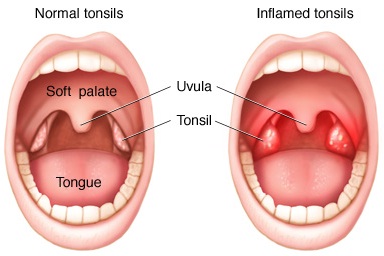
Partial tonsillectomy involves removal of most of the lymph tissue while the rim is left behind. The procedure has lesser postsurgical pain and faster recovery. It is generally done in children below 3 years of age. There are chances of regrwth of tonsillar tissue.
Advantages over traditional approaches
The traditional approach consists of scooping the tonsils with the help of a surgical scalpel and is called as the Cold surgery. Though this procedure removes the tonsils but it there is more tendency to bleed after this procedure. Cauterization is another traditional approach used commonly in which the tonsillar mass is burnt using excess amount of heat energy. The high energy also seals up the wound. Though the postop bleeding is less but surrounding healthy tissue may get charred because of the excessive heat.
The latest Coblation procedure overcomes both these after effects making it more advantageous
- Targeted and controlled emission of radiofrequency waves makes sure healthy tissues are unaffected
- Sealing of wound minimizes post op bleeding
- Safe for children and adults
- Faster and less painful recovery
When is Coblation tonsillectomy recommended?
- More than 7 episodes of swollen tonsils in a single year
- Recurrent sore throat and high grade fever of more than 101 degree Fahrenheit
- Difficulty in breathing at night causing sleep apnea
- Heavy snoring
- Inability to swallow due to narrowed throat passage
- Excessive pain and tenderness at the side of the throat
- Excessive bad breath due to infected tonsils and obstructed food particles in the oral cavity
How is it performed
It’s a quick surgery that takes less than an hour and is usually performed as an outpatient procedure. Patient is sedated under general anesthesia. In this new technology, radio-frequency (RF) energy is applied to a conductive medium like salinewhich causes a buildup of highly focused plasma field around the energized electrodes and is comprised of highly ionized particles. These ionized particles have the rightamount of energy to break bonds within tissue. Instead of exploding tissue as in cauterization, Coblation causes a low temperature disintegration of tissue at molecular level. This does not damage the nearby healthy tissues.
After surgery care
Since it is a day procedure, the patient can go home the same day. He is advised rest with elevation of the head to avoid swelling. The patient can consume soft cool fluids, mashed foods but nothing scratchy or hard that can irritate the throat. No exertion like running or lifting heavy loads till at least two weeks after surgery to prevent bleeding. Postsurgical pain and soreness go away in a week’s time and patient can return to normal activities in about two weeks. A bout or two of vomiting after surgery is normal as it is due to the effect of general anesthesia.
To know about more about most advanced tonsillectomy treatment at World class Hospitals in India, Please visit this link: https://safemedtrip.com/medical-services/ent-treatment-in-india/tonsillectomy-surgery.html

 Click to WhatsApp
Click to WhatsApp +91-9899993637
+91-9899993637




